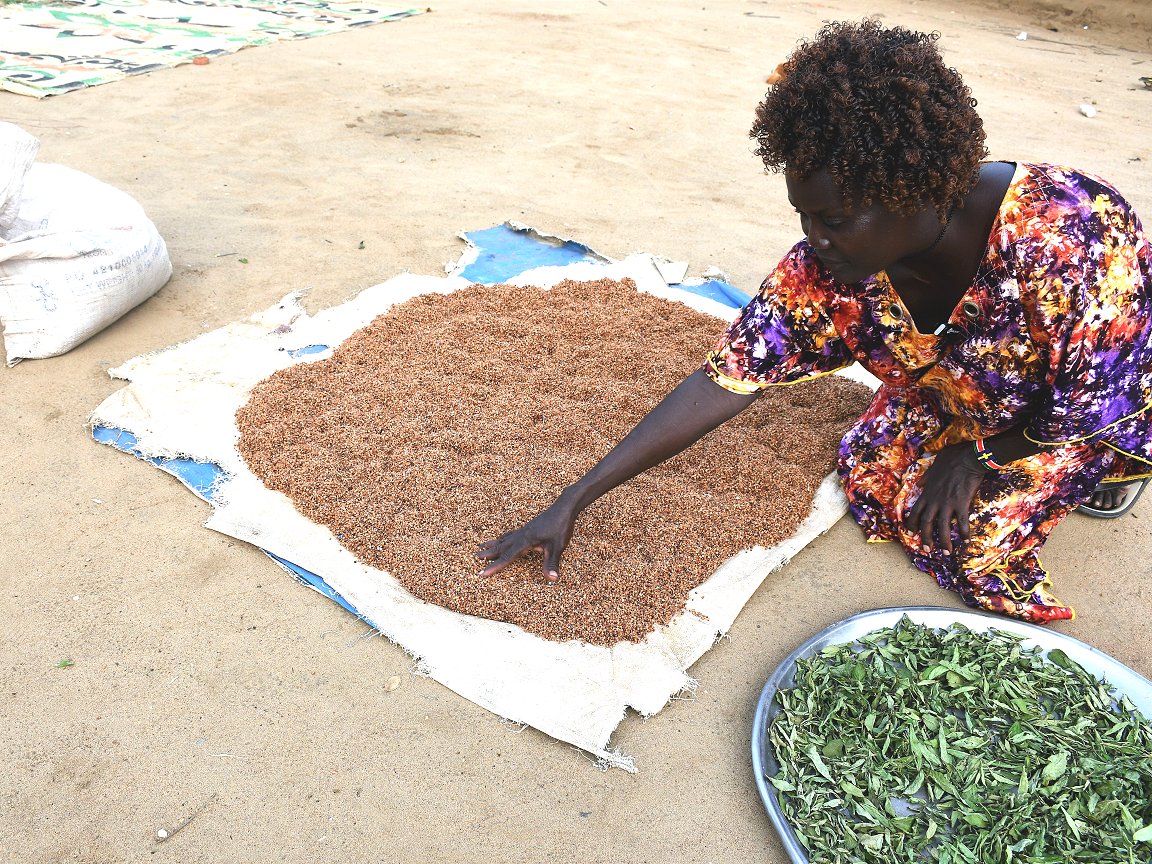
South Sudan food insecurity: ‘Holding on to hope the rains will not fail’

By Anna Wanjiru, IFRC Senior Regional Communications Officer, Nairobi
(This story appeared first on the IFRC website last Wednesday.)
Most countries in the Horn of Africa are reporting up to their fourth consecutive failed rainy season. Attributable to climate change, drought has pushed communities across the continent to life-threatening levels of hunger.
Kapoeta, South Sudan, has seen a drastic change in recent times. As residents walk by in the hustle and bustle of this small, rural town, you can see it in their faces: fatigue, most likely from hunger.
This is the second failed rainy season for a community that depends on cultivating crops. As I drive by local farmers’ fields, nearly all the crops I see are dry and struggling.
Andrea Loteng, 64, shows me around his farm. He’s the chairman of the local farmers’ association in Kapoeta South county and shares how erratic this year’s weather patterns have been.
“The rains this year came a little early in March. I planted maize and sorghum but the rains disappeared in May. I lost over 5 acres of crops. Now that it’s raining in July, I planted again, this time holding on to hope the rains will not fail,” he explains.
Wild leaves
Anyuon Malwan, Area chief of Atarabara, Kapoeta South also describes the situation as dire: “This is the second round of maize I am planting this year that is now failing. At least last year I harvested once.”
Some farmers have reached breaking point and abandoned farming altogether, turning to mining for gold instead. Travelling long distances, they camp at mines for weeks on end to try their luck at collecting a few grammes of gold in the local streams.
If they do get lucky, a gramme can fetch around 50 US dollars. But this livelihood, too, is risky and highly dependent on the rainy season.
Failed harvests in much of the Horn of Africa, coupled with the conflict in Ukraine and regional conflicts, have led the price of grain and cereal in Kapoeta to increase drastically.
“In 2021, we used to buy a kilo of maize flour at 300 South Sudanese Pounds [34 US cents], today the same packet goes for 1,300 [1.5 US dollars],” says Anyuon.
Unable to cope with the inflation, many residents in the area have resorted to more affordable cereals, such as sorghum. Those who cannot afford grain at all are forced to scavenge for wild leaves in nearby forests.
This poor diet is having devastating consequences for children in the Kapoeta region.
Yaya Christine Lawrence is a nurse at a stabilization centre for malnutrition in Kapoeta Civil Hospital. She attends to three-year-old Lolimo, who was admitted on 22 July with severe oedema (swelling in the ankles, feet and legs) from poor nutrition.
“When Lolimo came he was in a really bad state. We have been giving him treatment to clear the fluids before we can now start building up his weight. His case is one of the many hundreds we see in a month.”
Lolimo’s mother, Joska, is a single parent and doing her best to raise him, but times are hard.
“All I can afford to give him occasionally is sorghum and wild leaves. I have no source of livelihood to offer him a better diet,” she says.
‘Climatic shocks’
Women-headed households are bearing the brunt of food insecurity in this part of South Sudan. The Kapoeta region is hardest hit with, with more than 274,000 people classed as severely food insecure.
The South Sudan Red Cross (SSRC) recently conducted a needs assessment in the area, giving priority to women-headed households and people with disabilities, with a view to distributing cash to help them boost their livelihoods and put food on the table.
Supported by the IFRC and the Japanese government, the SSRC is also actively training community members in Kapoeta in disaster preparedness, including early warning for drought and floods, in groups called Community Disaster Response Team.
To mitigate the negative effects of climate change, SSRC volunteers are also planting fruit trees, and distributing seedlings, in Juba and other branches across the country as part of its ‘green fund’ initiative.
Mango and guava trees are more resistant to drought and only take a few years to start bearing fruit, so will provide a more reliable source of nutrients to local communities.
“The needs related to food insecurity in Kapoeta region and South Sudan are great. If we can strengthen localized response capacity and the community structures, we can address the enormous and unprecedented level of humanitarian needs because of the frequency and intensity of climate-related hazards,” says John Lobor, Secretary General of South Sudan Red Cross.
“Beyond responding to immediate food needs, we hope to build resilience, so families don’t have to grapple with climatic shocks year in, year out,” he adds.
A woman in Kapoeta, South Sudan, sits on the ground and inspects her precious supply of grain in July 2023. Drought has pushed communities across the continent to life-threatening levels of hunger, and most countries in the Horn of Africa especially are reporting up to their fourth consecutive failed rainy season. (Photo: Anne Wanjiru/IFRC)